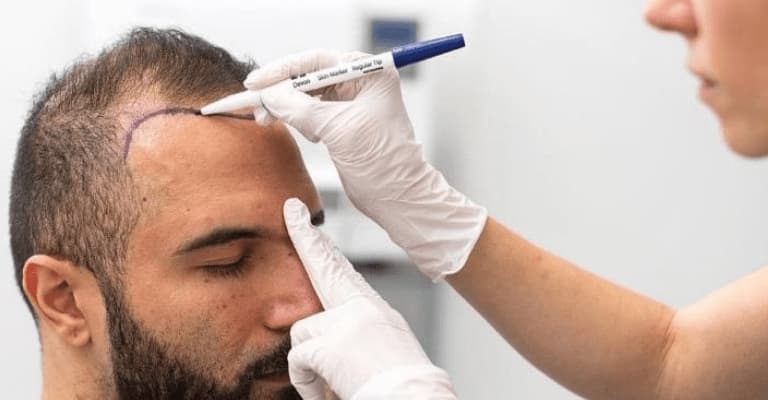Understanding Hair Transplant: A Journey to Fuller Hair
Hair Transplant in UAE (زراعة الشعر في الإمارات العربية المتحدة) surgery is a sophisticated procedure designed to restore hair growth to areas experiencing thinning or baldness. It involves moving healthy hair follicles from a donor area of the scalp, typically the back or sides, to recipient areas where hair is desired. This intervention offers a permanent solution for many individuals struggling with hair loss, providing natural-looking results. The United Arab Emirates has become a prominent destination for hair restoration, with advanced techniques and skilled professionals dedicated to helping individuals achieve a fuller head of hair.
The Pivotal Initial Consultation
The path to a successful hair transplant in the UAE begins with a thorough and personalized consultation. This initial meeting is paramount for several reasons. During this session, you will have the opportunity to discuss your concerns regarding hair loss, your aesthetic aspirations, and what you hope to achieve from the procedure. The hair restoration professional will meticulously examine your scalp, assessing the extent of your hair loss, the quality and density of your existing hair, and crucially, the availability of healthy donor hair.
This comprehensive evaluation helps determine your suitability for a hair transplant and allows the professional to recommend the most appropriate technique for your specific situation. They will also outline a realistic timeline for your journey, from the procedure itself to the emergence of new growth. It’s a vital stage for asking questions, clarifying any doubts, and ensuring you have a clear understanding of the entire process, fostering confidence as you embark on this transformative journey.
Preparing for the Procedure
Once the decision is made to proceed with a hair transplant, you will receive detailed instructions to prepare for your surgery. These guidelines are designed to optimize your health and ensure a smooth, comfortable experience. Common preparatory advice may include:
- Medical Review: A comprehensive review of your medical history, including any underlying health conditions and current medications or supplements you are taking. Certain substances might need to be temporarily discontinued to minimize risks like increased bleeding.
- Lifestyle Adjustments: Recommendations such as avoiding smoking for a period before the procedure, as this can affect healing and graft survival. Limiting alcohol consumption may also be advised.
- Scalp Care: Specific instructions on how to care for your scalp in the days leading up to the procedure, which might involve special shampoos or avoiding certain hair products.
Adhering strictly to these pre-operative instructions is crucial for the safety and success of your hair transplant.
Common Hair Transplant Techniques in the UAE
The Emirates offer access to cutting-edge hair transplant techniques, each designed to cater to different needs and preferences. The two primary methods are Follicular Unit Extraction (FUE) and Follicular Unit Transplantation (FUT).
Follicular Unit Extraction (FUE)
FUE is a minimally invasive technique where individual hair follicular units are extracted directly from the donor area (usually the back or sides of the head) using a specialized micro-punch tool. These follicular units, each containing one to four hairs, are then meticulously transplanted into tiny incisions created in the recipient area. The key advantage of FUE is that it does not involve a linear incision, resulting in no linear scar and a quicker recovery in the donor area. This makes it a popular choice for those who prefer to wear their hair very short.
Follicular Unit Transplantation (FUT)
FUT, also known as the “strip method,” involves surgically removing a small strip of scalp tissue from the donor area, typically the back of the head. This strip is then carefully dissected under microscopes to separate individual follicular units. These units are subsequently implanted into the recipient area. While FUT leaves a linear scar in the donor area, it can often yield a larger number of grafts in a single session, making it suitable for extensive hair loss.
The choice between FUE and FUT depends on factors such as the extent of hair loss, the quality and quantity of the donor hair, and individual preferences regarding scarring and recovery time. The hair restoration professional will discuss the advantages and disadvantages of each technique in relation to your specific case during the consultation.
The Surgical Process
On the day of the surgery, the procedure is typically performed under local anesthesia, ensuring that you remain comfortable and pain-free throughout. In some cases, a mild sedative may also be administered to help you relax. The process generally involves:
- Donor Area Preparation: The donor area (often the back of the head) is usually trimmed or shaved to facilitate the extraction of follicular units.
- Extraction: Using the chosen technique (FUE or FUT), hair follicles are carefully harvested from the donor area.
- Recipient Site Creation: Tiny incisions or slits are meticulously created in the balding or thinning areas of the scalp. The angle, direction, and density of these incisions are crucial for achieving a natural-looking hair growth pattern.
- Implantation: The extracted follicular units are delicately implanted into the prepared recipient sites. This step requires precision and artistry to ensure the new hair blends seamlessly with existing hair.
The duration of the procedure varies depending on the number of grafts being transplanted, often ranging from several hours to a full day.
The Journey to New Growth: Recovery and Results
The period following a hair transplant is crucial for the successful integration and growth of the transplanted follicles.
Immediate Post-Operative Phase (Days 1-3)
Immediately after the surgery, you may experience some redness, mild swelling, and tiny scabs forming around the transplanted grafts. Discomfort is usually minimal and can be managed with prescribed medications. You will receive detailed post-operative care instructions, including how to gently wash your scalp and avoid strenuous activities. It is common to see small crusts around the transplanted hairs, which will fall off naturally over the next few days.
Early Recovery and Initial Shedding (Weeks 2-4)
Within two to four weeks, the transplanted hairs typically undergo a “shock loss” phase, where they shed. This is a normal and expected part of the process, as the hair follicles enter a resting phase before new growth begins. It is important to understand that the transplanted follicles remain intact beneath the skin. Swelling and redness usually subside significantly during this period.
Emergence of New Growth (Months 3-6)
Around three to four months post-procedure, you will start to notice new, fine hairs beginning to emerge from the transplanted follicles. Initially, these hairs may be thin and soft. Over the subsequent months, they will gradually thicken and mature.
Significant Growth and Maturation (Months 6-12)
By six to nine months, a noticeable increase in hair density and coverage becomes apparent. The transplanted hair continues to grow and strengthen, blending more seamlessly with your existing hair. Around the 12-month mark, most individuals will see approximately 80% of their final results, with the transplanted hair fully matured and looking natural.
Final Results (12-18 Months)
The full and final results of a hair transplant typically become evident between 12 to 18 months after the procedure, as all residual swelling resolves and the hair reaches its maximum density and texture. Maintaining a healthy lifestyle is important to support the long-term health of your transplanted hair.
FAQs on Hair Transplant in the UAE
Is hair transplant a permanent solution for hair loss?
Yes, hair transplant is considered a permanent solution for hair loss because the transplanted hair follicles are typically taken from areas of the scalp that are genetically resistant to balding.
How long does a hair transplant procedure take?
The duration of a hair transplant procedure varies depending on the number of grafts being transplanted and the technique used, but it can typically range from 4 to 8 hours or even longer for extensive cases.
Will the transplanted hair look natural?
When performed by experienced professionals, transplanted hair should grow in a natural direction and pattern, blending seamlessly with your existing hair, making the results virtually undetectable.
What is the difference between FUE and FUT techniques?
FUE involves extracting individual follicular units directly from the scalp, resulting in tiny, dot-like scars. FUT involves removing a small strip of scalp and dissecting the follicles from it, leaving a linear scar in the donor area.
When can I resume normal activities after a hair transplant?
Most individuals can return to light, non-strenuous activities within a few days. Strenuous exercise and heavy lifting should be avoided for several weeks, as advised by the professional, to ensure proper healing and graft survival.









